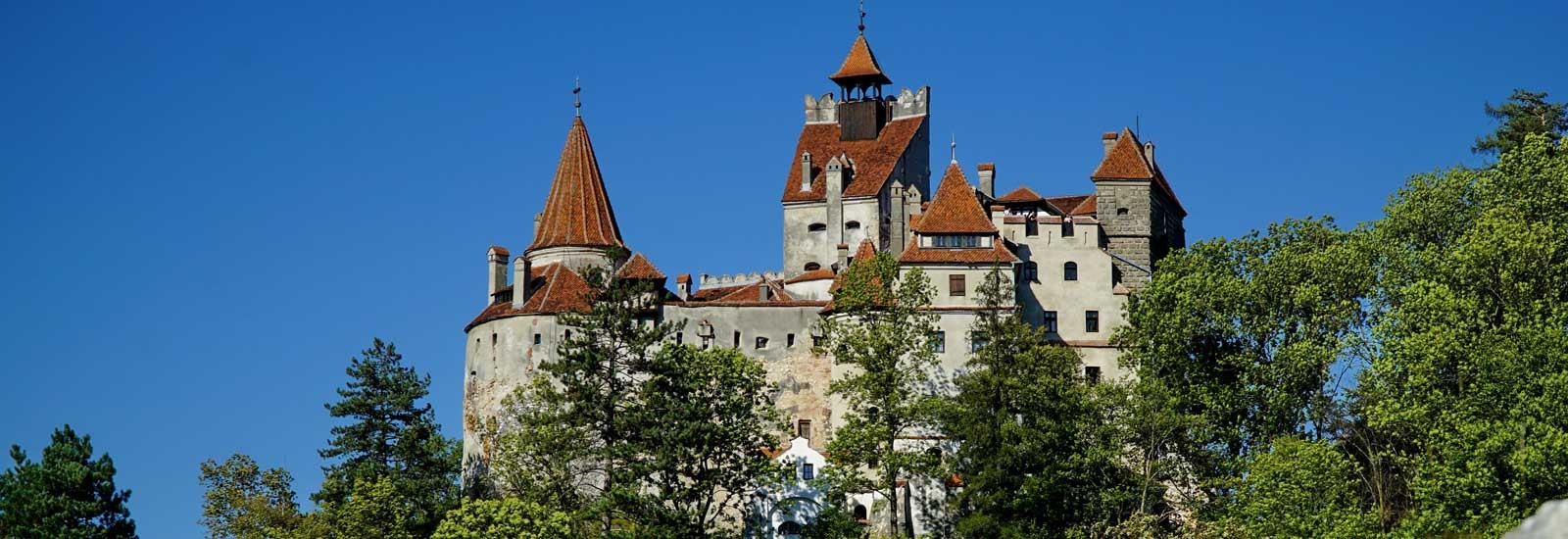Medieval castles and fortresses in Transylvania
Postat 12-02-2022
Transylvania is the most famous and the most popular travel destination in Romania. It impresses with the old historic places, beautiful countryside and great sceneries. The highlights of Transylvania are the medieval towns, castles and fortresses, fortified churches, charming old villages and all combined with great stories and legends.
Discover the most important castles and fortresses of Transylvania when you are traveling in Romania. Traveling to Transylvania is a chance to find more about the Middle Ages, about the defensive systems existing of those times, about terrible battles, about the way of life and traditions. Almost every guided trip in Romania will visit such places.
Below we are introducing to you the most important castles and fortresses of Transylvania
Bran Castle, also known as Dracula’s castle
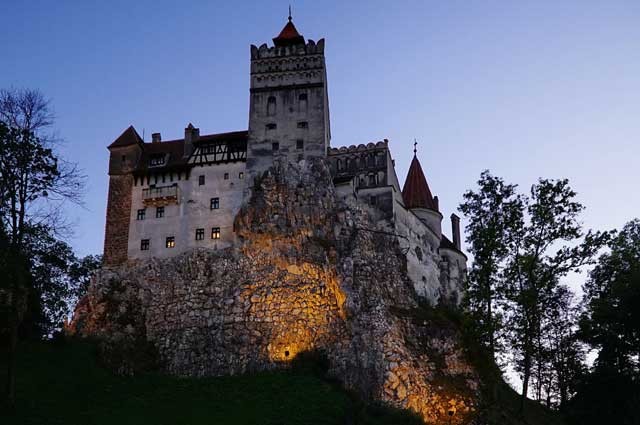
In the 13th century and before, the pass of Bran was one of the most important trade routes. From the other side, the military importance of this pass was high as due its position it was the best place to control the access in Transylvania – the Gate of Transylvania.
The first fortress was built here in the early 13th century by the Teutonic knights.
The castle we can see now was built in the late 14th century (1377). The new citadel was a perfect solution to block the valley. Today when you say Bran, people usually understand only the castle on the rock, 60 m high. Just a few of them will see 2 ruined walls situated at a distance of 200 m which closed the pass between the Citadel Hill and Magura Hill,creating an interior yard which together with the castle formed the Bran Citadel. From 1380-1382, king Ludovic I of Anjou, imported crossbow archers here from Scotland and brigands, to defend the castle.
Along the time the castle had a double role as defensive place and as custom point. The revenues from custom fees were very important as this was the most important trade route from Walachia to Transylvania.
In the end of 14th century the castle belonged, for a short period, to the Wallachian ruler – Mircea the Old, the grandfather of Vlad Dracula. During his life, before and after becoming a ruler, Vlad the Impaler (Dracula) had to pass through the castle to cross the border. These are the main reasons why the castle is called Dracula’s castle. In this place, in 1690 the soldiers of the Austro-Hungarian Empire stopped the Romanian army of Constantin Brancoveanu, forcing him to detour and then defeat the Austrian army to Zarnesti. The Bran Citadel fulfilled its military purpose until the XIX-th century. On December 1st, 1920 the City Council of Brasov gave the castle to Queen Maria's as a donation. This would be restored under Karel Liman’s direct guidance and become the Queen’s summer residence.
Corvin’s castle
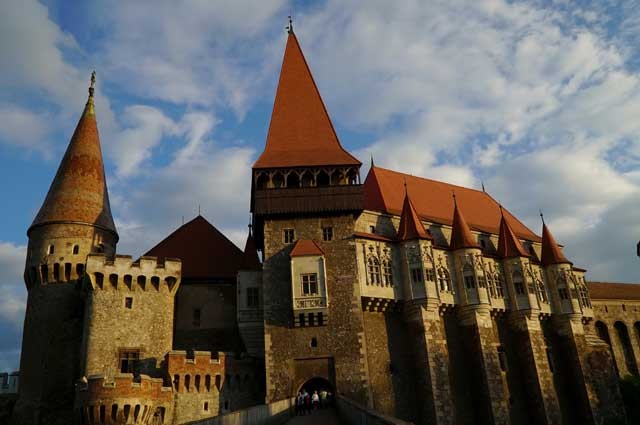
Contemporary documents mention the existence of a stronghold in the 14th century situated on the current site of the castle; a royal fortress with an elliptical shape and a refuge tower at the north wing, protected on the South side by a stone wall. This estate belonging to the D’Anjou family became the property of the Corvins at the beginning of the XV century (1409), during the time of the nobleman Voicu. It was given to them, the fortress and the state of Hunedoara. During this time the name of the Corvins was mentioned, when king Sigismund of Luxemburg offered the above estate and the castle as reward for special military excellence. Voicu’s son, Ioan of Hunedoara (Jo-hannes Corvin of Hunyad) enlarged the construction. As a result of two successive construction stages a new wall was developed between 1441-1446, equipped with 7 protective towers. He also built most of the Chapel, the proper palace (The Council Hall, The Knights Hall) the tower of the winding stairway and to the South side, household facilities during the second stage (1446 - 1453). After a number of confrontations with the Ottoman Empire, Ioan Corvin who was the military governor of the Hungarian Kingdom.
His son, Matei Corvin, (king of Hungary 1458-1490), built the loggia in the North wing, completed the construction of the Chapel and the Council chamber and continued the work of improving the castle. In the 15th century the castle was a unique example of a nobleman fortified residence for the Transylvanian area combining specific elements of late Gothic and early Renaissance style. The Corvins owned the castle and the state of Hune-doara until 1508.
The destiny of the castle is linked in the 17th century with the personality of Prince Gabriel Bethlen (1613-1629) who had some interior modifications executed. He remodelled the castle to suit the defensive demands of the time, by having the white tower, the artillery platform, the inner walls and the Bethlen wing, two new entrances into the castle opened to the new gate tower.
In 18th century the castle and estate became the property of the Habsburg Empire, and the castle itself was turned into administrative headquarters for the mines as well as storage for iron products (1724-1854).
Turning the castle into a museum occurred in 1974 preceded by another restoration and consolidation stage (1956-1968).From 1997, the restoration work continued to nowadays.
Rasnov fortress.
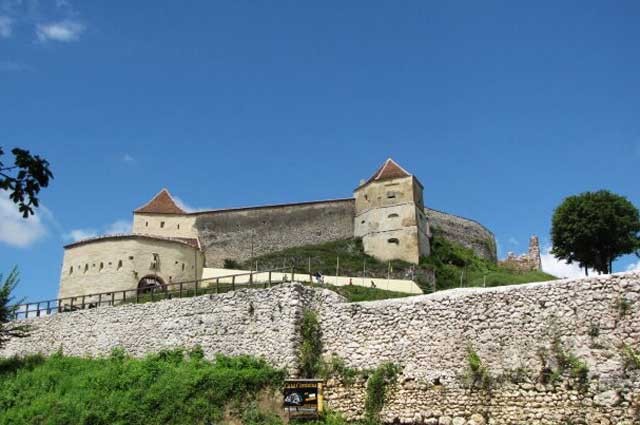
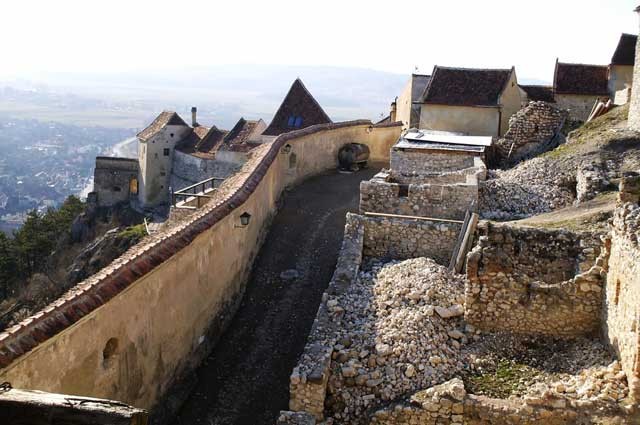
The Citadel of Rasnov is set on the top of a stone hill, in the east part of the modern town, the citadel was initially a larger precinct including today’s gardens, known as „the lower citadel“. One can see here the oldest towers from the fortress: the weapons tower (southern side) and Bathory tower (eastern side).There were found traces of older, pre-historic and Dacian fortifications in the „lo -wer citadel“. The citadel is believed to have been built during the Teutonic Knights stay in the Barsa County (1211 - 1225).The archaeological findings place the existence of fortifications as early as the 14th century. Moreover, it is said that in 1335,the citadel successfully withstood a Tatars invasion of the region, thus saving the life of the Rasnov community. The citadel was more than just a refuge against natural disasters and invasions, it became a second home for the people. Forced to stay inside for long periods of time they transformed it gradually over the years so by the 18th century, it ended up having regular houses, a school, a chapel and all the necessary things found in a small village.
Rupea Fortress

Rupea fortress impresses due its massive fortified walls and towers plus the dominant position on the hill above the Rupea town. It can be seen from large distances and from the top they could surveile the whole area. The fortified area occupies a surface of 110.000 sqm built in different stages. The origins of the fortress date from the 13th century but the first written document is from 1324. There are 3 concentric lines of walls. Throughout history it was used as a regional administrative center and a refuge place for the Rupea inhabitants. That is the reason why it is called “the peasant’s fortress”.
Feldioara Fortress

Feldioara citadel or Marienburg lies 20km far from Brasov on the shore of Olt River, up on a hill, in an important strategic place. The place was inhabited since the ancient times and there are proofs of the existence of some wooden or ground fortifications before the present fortress.
In the early 13th century we had the first stage in the construction of this fortress as being the headquarters of the Teutonic knights in Transylvania. They called it “Marienburg” as the town of Mary because their official name was the knights of Holly Mary Hospital from Acre.
After the last restoration the shape of the citadel is looking similar to the fortress that existed here in 17th century.
Calnic castle
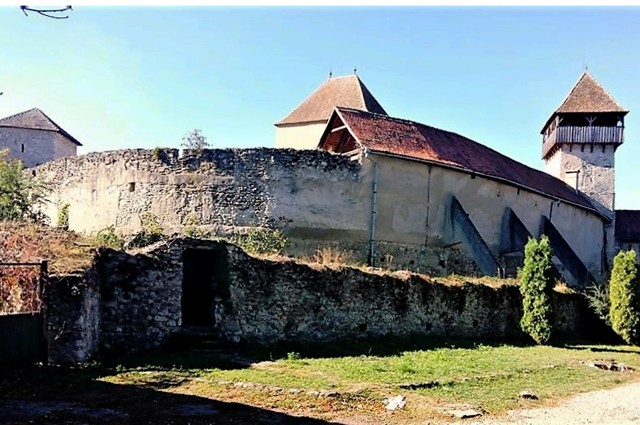
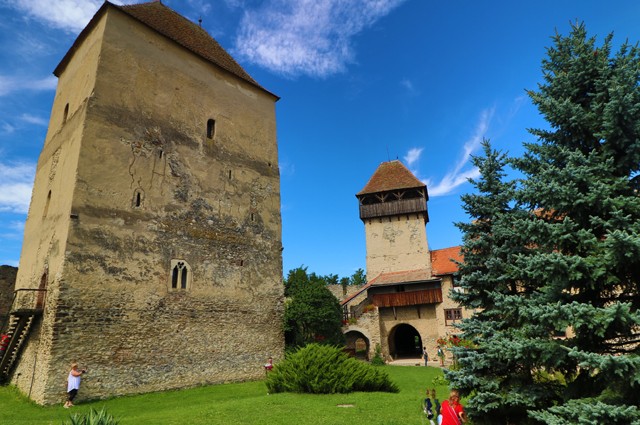
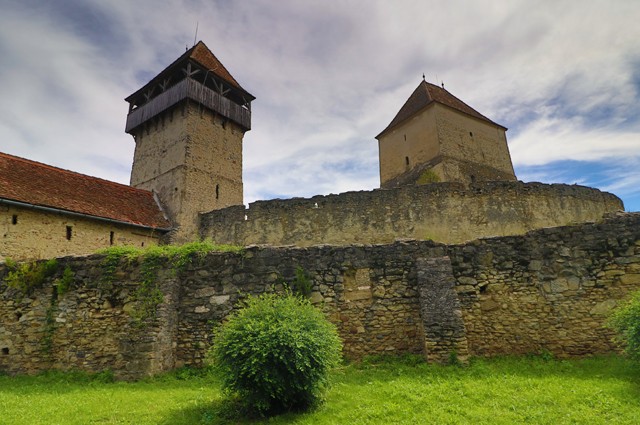
Calnic castle was built in the second part of the 13th century and it was the residence of the Saxon (German) noblemen. In 15th century it was sold to the local villagers community which continued to develop it into a peasant’s fortress. Today it is one of the most important monuments of its kind and was included in the UNESCO World Heritages List.
Choose a tour to Transylvanian castles
When you are deciding to take a trip in Transylvania and to have a tour of the Transylvania castle you have to keep in mind that they are spread over a fairly large territory. For example, between Bran and Corvin’s castle is almost 300 km (5hrs driving time). So it is not something you can do in a day tour or even in two days. Beside the castles visit you’ll want to include other attractions in your itinerary.
Therefore, we say that a minimum 3-4 days is necessary to have a taste of Transylvania and we recommend 5-7 days for a comprehensive tour.
It is much better to stay overnight in different locations (2-3 different towns) than to stay in just one place and to organize day tours. Distances and driving times will eat from your visiting time.
We are inviting you to travel to Transylvania to discover the stories and legends of our beautiful castle and citadels.
